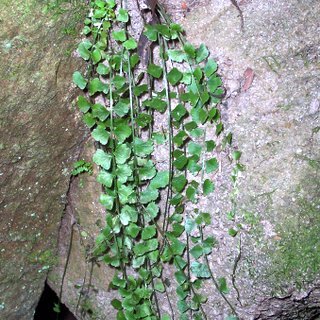Prostrate or pendent fern. Rhizome erect, scaly. Stipe and rachis mostly green, flaccid, ± glabrous, 1–15 cm long, 0.3–1 mm diam.; rachis often extending beyond uppermost pinnae and becoming proliferous at apices. Lamina very narrowly ovate to ± linear, pinnate, 4–30 cm long, 0.8–4 cm wide, pale green, ± glabrous. Pinnae in 7–30 pairs, mostly flabellate to cuneate; lower pinnae sometimes rhombic or triangular; bases broadly cuneate, shortly stalked; margins variously dentate or incised; largest pinnae 4–20 mm long, 5–20 mm wide at or near base, decreasing gradually upwards to an attenuate apex. Sori to 6 mm long. Perispores dark with fimbriate wings and tuberculate or veined lacunae; exospores 43.8–49.9 × 36.3–44.8 µm (means).

